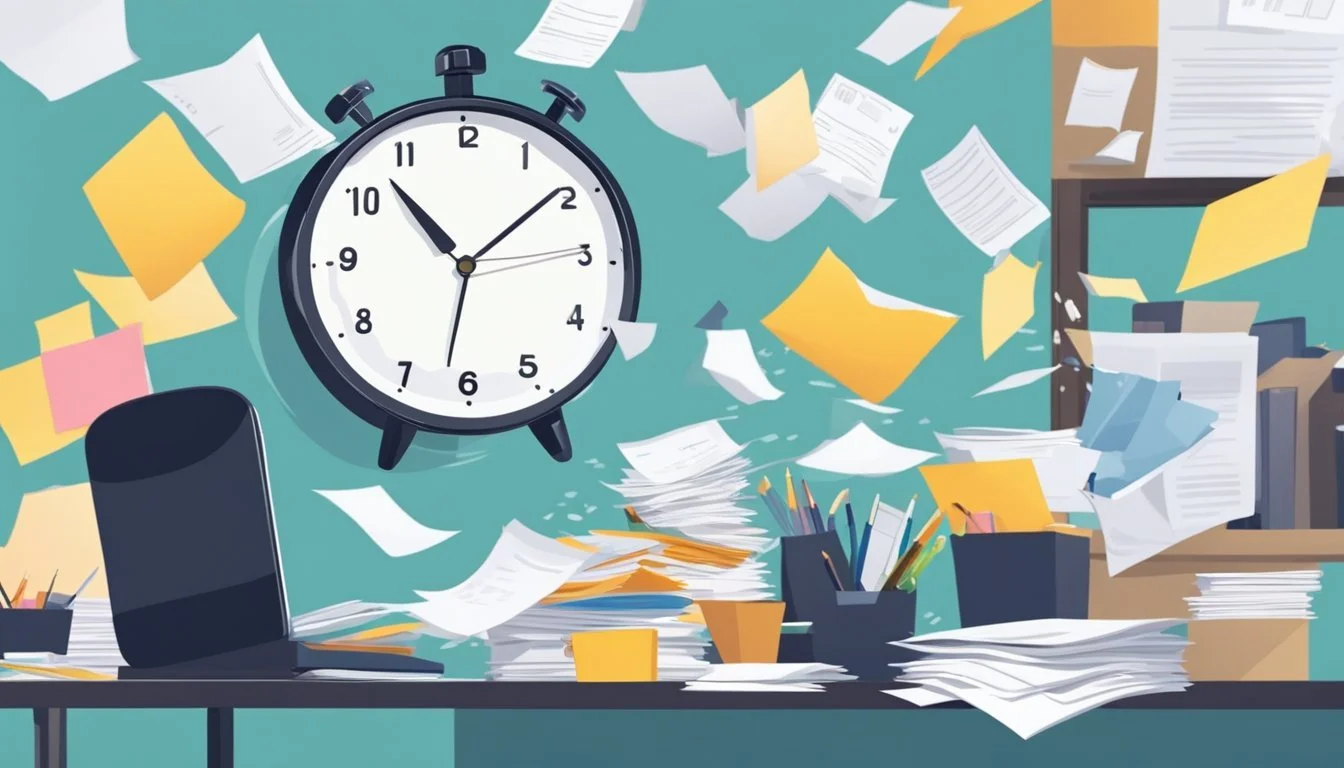9 Surprising Factors That Influence Your Decision Making
Hidden Forces Shaping Your Choices
Decision-making is a complex cognitive process that shapes our daily lives and defines our actions. From simple choices like what to wear to major life decisions, our brains constantly evaluate options and select paths forward. While we may believe we make rational choices based solely on logic, numerous hidden factors influence our decision-making processes.
Understanding the surprising elements that impact our choices can help us make more informed and effective decisions. This article explores nine unexpected factors that play a role in how we arrive at conclusions and select between alternatives. By examining these influences, readers can gain insight into their own decision-making patterns and potentially improve their ability to make optimal choices in various aspects of life.
1) Cognitive Biases
Cognitive biases are systematic patterns of deviation from rationality that influence human judgment and decision-making. These mental shortcuts can lead to flawed reasoning and inaccurate conclusions.
One common cognitive bias is confirmation bias, where people tend to seek out information that supports their existing beliefs. This can result in overlooking contradictory evidence and reinforcing preconceived notions.
The anchoring bias affects decision-making by causing individuals to rely too heavily on the first piece of information they receive. This initial "anchor" can skew subsequent judgments and evaluations.
Overconfidence bias leads people to overestimate their own abilities and the accuracy of their predictions. This can result in poor decision-making and unnecessary risk-taking.
The availability heuristic causes individuals to judge the likelihood of an event based on how easily they can recall similar instances. This can lead to overestimating the probability of rare but memorable events.
Cognitive biases can significantly impact professional and personal decisions. Recognizing these biases is the first step in mitigating their effects and improving decision-making processes.
2) Emotional States
Emotions play a crucial role in shaping our decisions. When we experience strong feelings, they can significantly impact our judgment and choices.
Fear, for example, can lead to risk-averse decision-making. People may avoid potentially beneficial opportunities due to anxiety about potential negative outcomes.
Anger often results in impulsive choices and reduced consideration of consequences. This emotional state can cloud rational thinking and lead to regrettable actions.
Happiness tends to promote optimistic decision-making. When in a positive mood, individuals are more likely to take risks and view situations favorably.
Sadness can influence decisions by altering our perception of value. Research suggests that sad individuals may be willing to pay more for items, as they seek comfort through acquisition.
Stress affects decision-making by impairing cognitive function. Under pressure, people may struggle to process information effectively, leading to poor choices.
Emotions also impact our ability to delay gratification. Strong feelings can override long-term planning in favor of immediate rewards.
Understanding the influence of emotional states on decision-making can help individuals make more balanced choices. Recognizing and managing emotions is key to improving decision quality.
3) Social Influence
Social influence plays a significant role in shaping our decision-making processes. People often look to others for cues on how to behave or what choices to make, especially in uncertain situations.
This influence can manifest through conformity, where individuals align their decisions with those of a group to fit in or avoid standing out. Peer pressure is another powerful form of social influence that can sway decisions, particularly among adolescents and young adults.
Research has shown that the opinions of friends, family, and even strangers can impact our choices in various domains, from consumer purchases to career decisions. Social media has amplified this effect, exposing people to a wider range of influences and opinions.
The strength of social influence can vary depending on the context and the individual's susceptibility. Some people are more resistant to social pressure, while others are more easily swayed by the views and actions of those around them.
Understanding the role of social influence in decision-making can help individuals become more aware of external factors affecting their choices. This awareness may lead to more intentional and independent decision-making processes.
4) Environmental Cues
Environmental cues play a significant role in shaping our decision-making processes. These external stimuli can subtly influence our choices without us even realizing it.
Physical surroundings can impact our decisions in various ways. For example, the temperature of a room can affect our mood and, consequently, our judgment. Studies have shown that people tend to make more impulsive decisions in warmer environments.
Lighting also plays a part in decision-making. Bright lighting can increase alertness and analytical thinking, while dimmer lighting may promote more intuitive and creative choices.
The presence of certain colors can influence our decisions as well. Red has been associated with increased caution and risk aversion, while blue can promote feelings of trust and security.
Ambient noise levels can affect cognitive processing. Moderate background noise may enhance creativity, while excessive noise can impair decision-making abilities.
The arrangement of objects in our environment can nudge us towards specific choices. For instance, the placement of items on a menu or products on a shelf can influence what we select.
Even subtle environmental cues like scents can impact our decisions. Pleasant aromas can improve mood and potentially lead to more positive decision outcomes.
5) Cultural Background
Cultural background significantly shapes how individuals approach decision-making. Different cultures prioritize various aspects of the decision process, influencing what people consider important when making choices.
In some cultures, collective decision-making is valued, with group harmony and consensus taking precedence. Others emphasize individual autonomy and personal responsibility in choices.
The perception of risk and uncertainty also varies across cultures. Some societies are more risk-averse, leading to cautious decision-making, while others may be more comfortable with ambiguity and risk-taking.
Time orientation plays a role too. Cultures with a long-term perspective may consider future implications more heavily, while those focused on the present may prioritize immediate outcomes.
Cultural values impact the factors considered in decisions. For instance, some cultures might prioritize family obligations or social status, while others focus more on personal goals or financial considerations.
Communication styles influenced by culture can affect how decisions are discussed and implemented. Direct versus indirect communication can lead to different approaches in collaborative decision-making processes.
6) Pre-existing Knowledge
Pre-existing knowledge plays a significant role in shaping our decision-making process. The information and experiences we have accumulated over time form the foundation for how we interpret new situations and make choices.
This knowledge base influences our perception of risks and opportunities, affecting the options we consider viable. For example, someone with extensive experience in a particular field may be more inclined to take calculated risks based on their deep understanding of the subject matter.
Our pre-existing knowledge also impacts how quickly we make decisions. Familiarity with a topic often leads to faster decision-making, as we can draw upon established mental frameworks and patterns.
However, relying too heavily on pre-existing knowledge can sometimes lead to biased decision-making. It may cause individuals to overlook new information or alternative perspectives that contradict their established beliefs.
To make well-rounded decisions, it's important to balance pre-existing knowledge with openness to new information. This approach allows for more adaptable and informed choices in various situations.
7) Information Overload
In today's digital age, decision makers face an unprecedented influx of data and information. This abundance can lead to a phenomenon known as information overload, which significantly impacts the decision-making process.
When confronted with excessive information, individuals may experience decreased decision quality. The human brain has limited cognitive processing capacity, making it challenging to sift through and analyze large volumes of data effectively.
Information overload can result in decision fatigue, where individuals become mentally exhausted from processing too much information. This fatigue can lead to poor choices or a tendency to avoid making decisions altogether.
The constant bombardment of information can also increase stress levels and reduce productivity. Decision makers may find themselves spending more time sorting through information than actually making decisions.
To combat information overload, individuals and organizations can implement strategies such as prioritizing information sources, setting clear decision-making criteria, and utilizing tools to filter and organize data. These approaches can help streamline the decision-making process and improve outcomes.
Recognizing the impact of information overload is crucial for effective decision making in both personal and professional contexts. By managing information intake and developing strategies to process data efficiently, individuals can make more informed and timely decisions.
8) Stress Levels
Stress significantly impacts decision-making processes. When under stress, the brain's emotional centers become more active, potentially leading to choices based on immediate feelings rather than careful reasoning.
Short-term stress can actually enhance decision-making in some situations. It may increase focus and alertness, allowing for quicker responses in urgent scenarios. However, this effect is typically limited to brief periods of stress.
Chronic stress has a more detrimental effect on decision-making abilities. It can impair cognitive function, reducing the capacity for complex problem-solving and rational thought. People experiencing ongoing stress may rely more heavily on habitual responses rather than considering new options.
Stress can also alter risk perception. Some individuals become more risk-averse when stressed, while others may engage in riskier behavior as a coping mechanism. This variability in response highlights the complex relationship between stress and decision-making.
The impact of stress on decisions varies among different age groups. Research suggests younger adults may find decision-making more stressful than older generations, particularly in times of widespread uncertainty.
9) Time Pressure
Time pressure significantly impacts decision-making processes. When faced with limited time, individuals often alter their approach to problem-solving and choice selection.
Under time constraints, people tend to rely more on intuitive decision-making. This shift can lead to increased focus on immediate outcomes rather than long-term consequences.
Research suggests that time pressure can influence risk preferences. Some studies indicate that individuals may become more risk-averse when making decisions quickly, while others show increased risk-taking behavior.
Time constraints can also affect information processing. People may prioritize certain types of information or use simplified decision strategies when pressed for time.
The impact of time pressure on decision quality varies. In some cases, quick decisions can be equally effective as those made with more time. However, complex problems often benefit from longer deliberation periods.
Decision-makers under time pressure may experience increased stress and anxiety. These emotional responses can further influence judgment and choice outcomes.
Organizations and individuals can develop strategies to mitigate the negative effects of time pressure on decision-making. These may include prioritization techniques, decision frameworks, and practice in rapid decision-making scenarios.
The Role of Emotions in Decision Making
Emotions play a crucial part in shaping our choices and judgments. They can influence our perception, narrow our focus, and impact our ability to think rationally.
Emotional Influences on Choice
Strong emotions like anger, fear, or excitement can create a "tunnel vision" effect, limiting our consideration of options. This narrowed perspective can lead to impulsive decisions that may not align with our long-term goals or values.
Positive emotions often encourage risk-taking behavior. When feeling happy or confident, individuals are more likely to make optimistic choices and overlook potential downsides.
Negative emotions, conversely, can lead to risk-averse decision-making. Fear or anxiety may cause people to avoid taking chances, even when potential benefits outweigh the risks.
Emotional states can also impact the speed of decision-making. Intense emotions may prompt quick, instinctive choices without thorough consideration of consequences.
How Stress Affects Decisions
Stress has a significant impact on decision-making processes. Under stress, the brain's prefrontal cortex - responsible for rational thinking - may function less effectively.
This can lead to more impulsive and emotion-driven choices. Stressed individuals often struggle to weigh options objectively and may rely more heavily on habitual responses.
Chronic stress can impair memory and attention, further complicating decision-making. It may lead to difficulty in recalling relevant information or focusing on important details.
In some cases, moderate levels of stress can enhance decision-making by increasing alertness and motivation. However, prolonged or intense stress typically hinders effective choices.
Stress management techniques, such as mindfulness or deep breathing, can help mitigate these effects and promote clearer thinking during decision-making processes.
The Impact of Cognitive Biases
Cognitive biases significantly shape our decision-making processes, often leading to errors in judgment and irrational choices. These mental shortcuts can profoundly influence how we perceive information, evaluate options, and reach conclusions.
Understanding Cognitive Biases
Cognitive biases are systematic patterns of deviation from norm or rationality in judgment. They stem from our brain's attempt to simplify information processing. These mental shortcuts can be helpful in some situations, allowing for quick decisions. However, they can also lead to flawed reasoning and poor choices.
Cognitive biases affect everyone, regardless of intelligence or education. They operate subconsciously, making them difficult to recognize and overcome. By understanding these biases, individuals can become more aware of their thought processes and make more informed decisions.
Common Cognitive Biases in Decision Making
Several cognitive biases frequently impact decision-making:
Confirmation Bias: The tendency to seek out information that supports existing beliefs while ignoring contradictory evidence.
Availability Heuristic: Relying on readily available information rather than considering all relevant facts.
Anchoring Bias: Focusing too heavily on the first piece of information encountered when making decisions.
Overconfidence Bias: Overestimating one's own abilities or the accuracy of predictions.
Outcome Bias: Judging a decision based on its outcome rather than the quality of the decision-making process.
Recognizing these biases is crucial for improving decision-making. Strategies to mitigate their effects include seeking diverse perspectives, challenging assumptions, and using structured decision-making frameworks.






